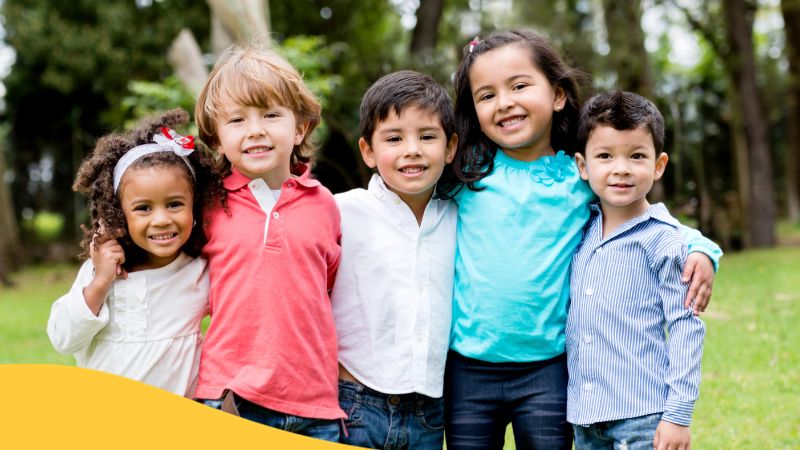With so much interest in K-pop, K-dramas, and yummy Korean barbeque these days, wouldn’t it be awesome if the kiddos could actually understand a wee bit of Korean? Ain’t no mountain high enough, no river wide enough to stop us from having a bit of a chinwag about giving our kids a headstart with easy Korean words for children. Ready, mate? Let’s begin!
Learning a new language isn’t just about adding a string to your bow. Nah, it’s better than snagging the last pair of Jimmy Choos in a Black Friday sale! It’s about opening their world to new ways of thinking and appreciating different cultures. But let’s be honest, looking at Korean characters can feel a bit like trying to understand the appeal of socks with sandals… initially confusing, mildly intimidating but, with a dose of curiosity, oddly fascinating.
Don’t you stress, though, darlin’. We’ve got you covered! This guide will break it down for you into digestible chunks, especially curated for kids and utterly froth-worthy – we’re going to make it as easy as sliding into your new fav pair of jeans.

Easy Korean Words For Children
Greetings
Greetings are the heart of any conversation and are vital in daily life. They are a fantastic starting point to get familiar with the language. Here, we have a compilation of some basic yet essential Korean greetings for children to learn.
안녕하세요 (Annyeonghaseyo): Hello
First and foremost is the warm greeting, “Hello!” Saying hello is usually the first step when meeting someone new. In Korean, “안녕하세요” (Annyeonghaseyo) is used as a respectful way to say “Hello.”
Tips: This greeting can be used at any time of the day, irrespective of whether it’s morning, afternoon, or evening!
안녕 (Annyeong): Hi
Looking for a more casual “Hello?” Simply saying “안녕” serves as an informal, friendly way to greet your peers or someone younger. Keep in mind, though, to only use this with friends and those younger than you!
안녕히 계세요 (Annyeonghi gyeseyo): Goodbye (if the other person is staying)
Saying goodbye can be a little tricky in Korean as it depends on who is leaving and who is staying. If you’re leaving and the person you’re saying goodbye to is staying, say “안녕히 계세요” (Annyeonghi gyeseyo).
안녕히 가세요 (Annyeonghi gaseyo): Goodbye (if the other person is leaving)
However, if the person you’re saying goodbye to is leaving, you say “안녕히 가세요” (Annyeonghi gaseyo). It might seem a bit confusing initially, but with practice, it becomes easier to discern when to use each phrase!
만나서 반갑습니다 (Mannaseo bangapseumnida): Nice to Meet You
When children meet someone for the first time, they can make an excellent impression by saying “만나서 반갑습니다” (Mannaseo bangapseumnida), which translates to “Nice to meet you.”
Nature
Nature is all around us, and it offers an abundant collection of words that children can add to their Korean vocabulary. From the sun that lights our day to the moon that brightens our night, each aspect is a new word waiting to be learned. Here are some fascinating Korean words related to nature that are perfect for children learning the language.
해 (Hae): Sun
The sun is an essential part of our lives and therefore a pivotal word to know. In Korean, ‘Sun’ is 햇빛(Haetbit), but for simplicity, we’ll use ‘해 (Hae)’, which means ‘Day’ and is often associated with the sun.
달 (Dal): Moon
The Korean word for ‘Moon’ is ‘달 (Dal)’. It’s easy to remember due to its short, simple sound. Isn’t it wonderful that your child will be able to identify the moon not only in English but also in Korean?
하늘 (Haneul): Sky
The ‘Sky’, a wide expanse above us, is referred to as ‘하늘 (Haneul)’ in Korean. Encourage your child to look up into the ‘하늘 (Haneul)’ and identify it in Korean.
별 (Byeol): Star
Wondering what ‘Star’ is in Korean? It’s ‘별 (Byeol)’. Your little one can now wish upon a ‘별 (Byeol)’ in a new language!
구름 (Gureum): Cloud
Floating cotton-like structures in the sky, the ‘Clouds’ are ‘구름 (Gureum)’ in Korean. Imagine how much fun children will have, identifying ‘구름 (Gureum)’ in the ‘하늘 (Haneul)’!
나무 (Namoo): Tree
The word for ‘Tree,’ fundamental to ecosystems around us, in Korean is ‘나무 (Namoo)’. On their next nature walk, children can point and say ‘나무 (Namoo)’ as they spot each tree!
꽃 (Kkot): Flower
And lastly, the beautiful ‘Flower’ is referred to as ‘꽃 (Kkot)’ in Korean. Now every time they spot a flower, be it in a book, garden, or vase at home, they’ll have a new word to say!
Animals
Kiddos love animals, don’t they? Whether it’s the fluffy bunny at the petting zoo or the playful dolphins at the aquarium, animals captivate their hearts and minds. For the next daring journey, let’s explore popular animals in the Korean language.
개 (Gae): Dog
In Korean, the word for ‘Dog’ is ‘개 (Gae)’. Dogs are known for their loyalty and are frequently found in Korean households as pets. Associating this Korean word with their beloved pet can serve as a fun way for children to remember the term easily.
고양이 (Goyangi): Cat
‘고양이 (Goyangi)’ is the Korean term for ‘Cat’. Cats are well-loved animals, often seen as playful, independent, and somewhat mysterious. When Korean parents teach their children about the word ‘Goyangi,’ they often mimic the ‘meow’ sound cats make which is “야옹 (Ya-ong)” in Korean, making the learning process more engaging and interactive.
소 (So): Cow
‘소 (So)’ refers to a ‘Cow’ in Korean. This term will come in handy when visiting a farm or reading children’s books about farm animals. Easy to pronounce, children can have fun making the mooing sound while saying ‘So’!
말 (Mal): Horse
Contrary to what one might think, ‘말 (Mal)’ actually means ‘Horse’ in Korean. Interestingly, the word ‘말’ also means ‘word’ or ‘speech’ in Korean, depending on the context. Horses are strong, graceful creatures that children often learn about in storybooks or see during trips to the countryside.
토끼 (Tokki): Rabbit
‘Tokki’, which stands for the adorable ‘Rabbit’ in Korean, is a term children love. Rabbits are often seen as cute and cuddly, which makes this word an appealing one for kids to learn.
사자 (Saja): Lion
‘Saja’ is the Korean term for the majestic ‘Lion’. Lions are commonly referred to as the “king of the beasts” and are often seen as symbols of power and courage. Learning the Korean term for lions can be an exciting fact for children, especially when coupled with interesting stories or facts about these incredible animals.
멧돼지 (Met-dwaeji): Pig
Lastly, ‘멧돼지 (Met-dwaeji)’ means ‘Pig’ in Korean. Although a bit harder to pronounce than the others, the term is a fun one for kids, especially since pigs are often associated with farm life children frequently encounter in children’s books, games, and shows.

Strategies To Teach Kids Korean
Learning a new language can be a fun and enriching experience for children. Here are some strategies to help your children effectively learn Korean and also develop a deep love for the language.
Consistent Exposure
Discourse theorists argue that exposure to language in different contexts helps in learning it. It’s the same with Korean language learning. Engage your kids with Korean content by watching Korean cartoons like “Pororo the Little Penguin” or playing Korean nursery rhymes. Besides entertainment, these mediums offer a brilliant way to naturally introduce them to the sounds, rhythm, and structure of the Korean language.
Engaging Activities
Incorporate fun activities designed around the Korean language into your child’s schedule. For instance, teach them a popular Korean children’s song like ‘산토끼’, or play Korean board games like ‘윷놀이’ (Yut Nori). Both these enjoyable learning methods can help enhance their vocabulary and pronunciation while making the process exciting.
Visual Tools
Children are usually visual learners who comprehend and remember things better with the aid of images. Flashcards illustrated with common Korean words or phrases can be tremendously helpful. Take an object like ‘개 (Gae)’ and use an image of a dog to explain. You can also read them illustrated Korean books such as ‘나비야 (Butterfly)’ for an effective learning experience.
Online Learning Platforms
With the advancement of technology, learning Korean has become easier than ever. Online platforms such as Duolingo, Rosetta Stone, or websites like Talk To Me In Korean have specific programs curated for children. They offer interactive lessons, complete with audio clips, quizzes, and other fun learning tools.
Conversational Practice
Practising Korean in everyday conversations significantly improves fluency. Encourage your children to form simple sentences or use common words in Korean during regular conversation. For example, they can share about their day in Korean at the dinner table saying, “저는 오늘 학교에서 노래를 배웠어요” which translates to “I learnt a song at school today.”
Cultural Understanding
When using immersion techniques, it’s beneficial to include exposure to Korean culture along with the language. Trying Korean foods like ‘Kimchi,’ learning about ‘Hanbok’ (traditional costume), or Korean holidays like ‘Chuseok’ (Harvest Festival) can inspire curiosity and eagerness to learn the language.
Learn Korean With Ling
As we learned in this post, teaching Korean to kids can be both effective and enjoyable by using various strategies that promote consistent exposure, engaging activities, visuals, conversation, and cultural appreciation. Remember to be patient and encourage a love for learning. To help kickstart their Korean language journey, download the Ling app from the App Store or Play Store and give your child a fun and interactive way to learn Korean.


































































